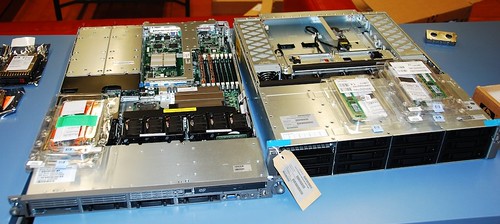Hello everyone,
I thought you might be interested in coming to this summer school!
Best regards,
We are pleased to announce the 2009 Summer School in Sound and Music Computing & SID Training School on Interactions with Environmental Sounds.
It will take place in Casa Da M?sica, Porto, Portugal, July 18th-21st, 2009, just before the 6th Sound and Music Computing Conference.
The theme of this summer school is Interacting with Sounds of Porto. This summer school will explore the potential of recording, processing, sharing and interacting with city sounds.
During 4 days, the program will include lectures, as well as hands-on practical sessions under the supervision of tutors who will provide one-to-one mentoring on artistic and/or scientific projects focused on interactions with sounds that reflect the city of Porto and its activities. Speed talks and poster sessions will also be organized for students to present and receive feedback on their current research, and to foster scientific cross-fertilization.
Lectures and teachers
- Design of new interfaces for musical expression . Marcelo Wanderley.
- Registering the soundscape. Joel Chadabe.
- Sound edition, description and retrieval, social networks. Xavier Serra.
Tutors and proposed topics
- Jean-Julien Aucouturier (Topic: Hearing objects)
- Stephan Baumann (Topic: UrbanSync: back in Porto)
- Eoin Brazil (Topic 1: Porto sound shaker. Topic 2: Porto Mobile Sound Wall. Topic 3: Porto fact-oid mutlimedia kiosk)
- Bram de Jong (Topic: Porto in Freesound)
- Luis Gustavo Martins (Topic: Automatic segmentation, classification and clustering of sounds of Porto for tangible interaction)
- Rui Penha (Topic: Interfaces and algorithms for Casa da M?sica robotic Gamelan)
- Stefania Serafin and Federico Fontana (Topic: Natural interactive walking in Porto)
Dates
April 24th / Deadline for application (see details on the web)
May 12th / Notification of acceptance
There will be a registration fee of 200? to the Summer School. The COST Action IC0601 on Sonic Interaction Design will provide financial help to a selection of students under the form of individual fixed grants of 500 Euros (preference will be given to students whose proposal projects best fit SID topics -see here).
Summer School students are also encouraged to attend the Sound and Music Computing Conference (23-25th July 2009). There will be special (lower) conference fees for Summer School students.
More info at http://www.smcnetwork.org/summerschool/porto2009
Stay tuned on the summer school and conference news:
- RSS feed: http://smc2009.smcnetwork.org/news/news/RSS .
- Facebook group: http://www.new.facebook.com/group.php?gid=42958077160 .
- Twitter: http://twitter.com/smc2009



 ?
?





